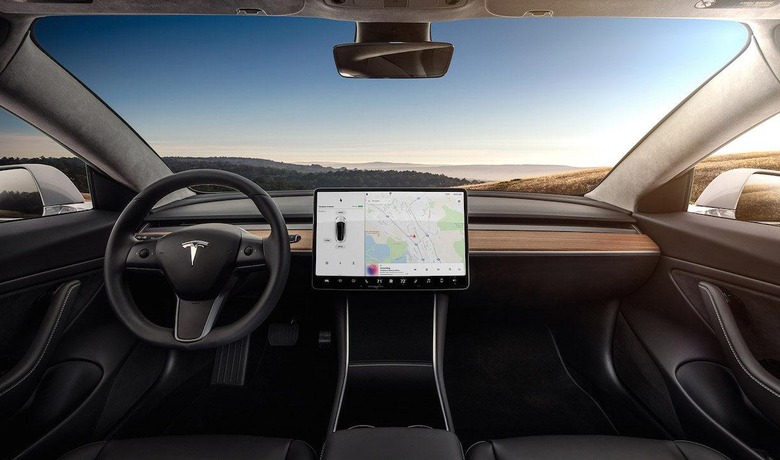Tesla Model 3 Brake Controversy Loses EV A Key Recommendation
Tesla's Model 3 may be its most affordable car, but concerns over braking performance has seen the electric sedan miss getting the nod from Consumer Reports. Latest in a series of ongoing tensions between the testing company and the EV-maker, the decision comes as Tesla announced it was almost ready to open the order books on even more expensive versions of the electric car.
Generally, reviews of the Model 3 have proved positive. Although the automaker has been reluctant to allow too many journalists time behind the wheel, coverage of the car has typically been impressed by the Tesla's range, technology, and performance. The most frustrating aspect for most is the continued absence of the more affordable variant that Elon Musk first promised at the Model 3's initial reveal.
Indeed Consumer Reports has a reasonably long list of features it likes about the Model 3. The car's performance gets praised, along with its handling, with the site comparing the latter to that of a Porsche. Range, too, is particularly impressive: with the strongest regenerative braking enabled, the car did 350 miles on a charge.
However it wasn't all good news. Most worrying is the braking distance for the Model 3. When first tested, Consumer Reports says, the car did a 60 mph to standstill run in around 130 feet. However, it subsequently failed to repeat that: even after being left overnight for the brakes to cool completely, it averaged 152 feet. That, the site points out, is "far worse" than any other contemporary car.
Even after a second Model 3 was tested in the same way, the results were equally bad. Meanwhile, the Model 3's touchscreen-centric controls – which put everything, including the direction that the air vents blow – into sections of the UI on the centrally mounted display – also come in for criticism. That's not exactly a new complaint, either, with other drivers having complained that it can be distracting to find features while driving.

Tesla has made moves to address some of those control critiques. In an update in early April, for example, it shifted some of the more commonly-accessed Autopilot controls to the steering wheel. Earlier testers had voiced concerns that, at launch, the same features needed to be accessed via the touchscreen instead.
Now, the automaker says it expects to be able to address these braking issues in a similar way. "Tesla's own testing has found braking distances with an average of 133 feet when conducting the 60-0 mph stops using the 18" Michelin all season tire and as low as 126 feet with all tires currently available," a spokesperson told SlashGear. Stopping distance results are affected by variables such as road surface, weather conditions, tire temperature, brake conditioning, outside temperature, and past driving behavior that may have affected the brake system. Unlike other vehicles, Tesla is uniquely positioned to address more corner cases over time through over-the-air software updates, and it continually does so to improve factors such as stopping distance."
It's unclear how, exactly, software might be used to change the Model 3's braking performance. One possibility is that it's connected to the vehicle's regenerative braking system, which uses the drive motors as generators as the car slows, topping up the battery. We've reached out to Tesla for further clarification, and will update if we hear more on the situation.
The decision by Consumer Reports not to grant the Model 3 its "recommended" award comes as Tesla CEO Elon Musk confirmed final specifications for the Model 3 Performance and Model 3 Dual Motor. Each will use two motors – driving the front and rear – for more grip and faster acceleration. In the case of the Performance package, that will mean a 0-60 mph time of 3.5 seconds, Musk says.
Still absent, of course, is the original $35,000 Model 3 that Tesla initially hooked many of its reservation holders with the promise of. That, Musk pointed out to a Twitter user over the weekend, will just have to wait a little longer. Indeed, he argued, had the automaker delivered the cheapest Model 3 from the get-go, Tesla would then "lose money & die."
This discrepancy in braking performance comes only a week after the IIHS gave the Model 3 a "Superior" rating in its Front Crash Prevention category. That's based on the car having a forward collision warning system which not only sounds an alert if a crash is possible, but which can automatically brake the car and avoid a collision in two tests: at 12 mph and 25 mph, in each driving straight toward a stationary target standing in for the rear of another car. The IIHS does not test 60-0 mph braking as part of its recommendation process, and the NHTSA is yet to assess and rate the Model 3 in its testing.
